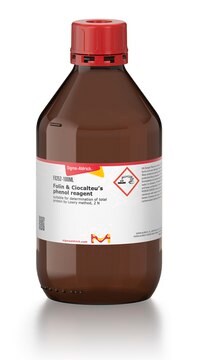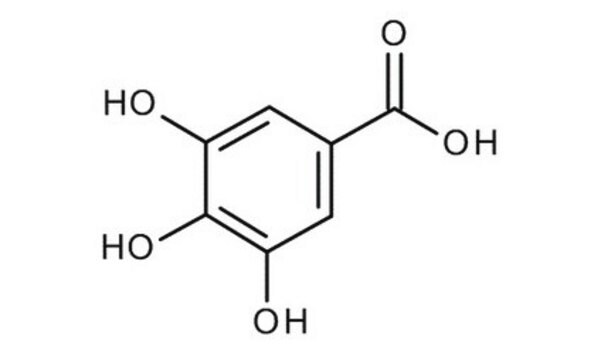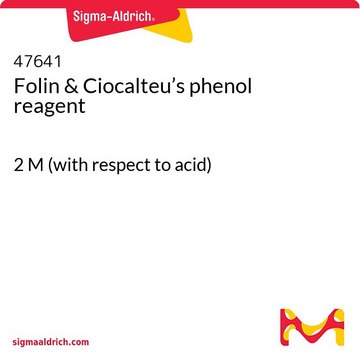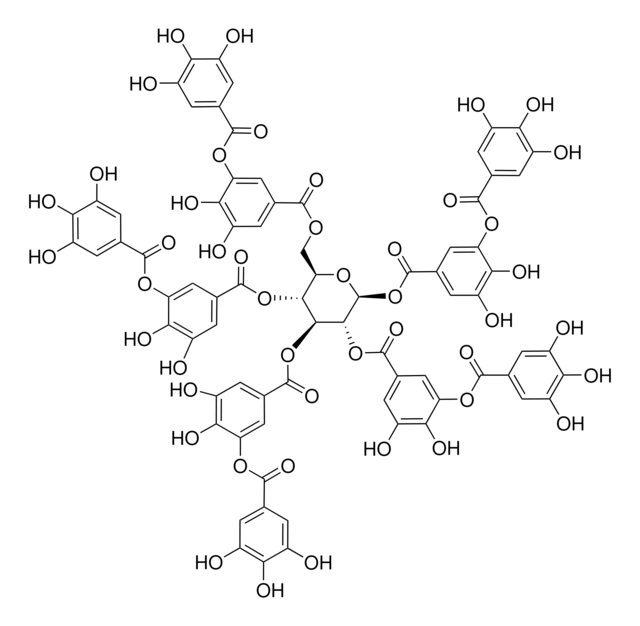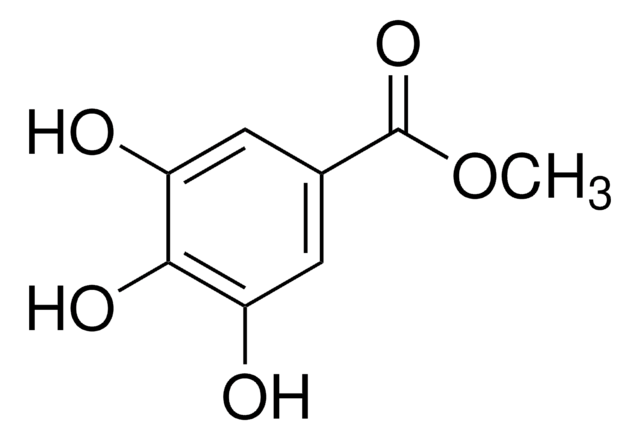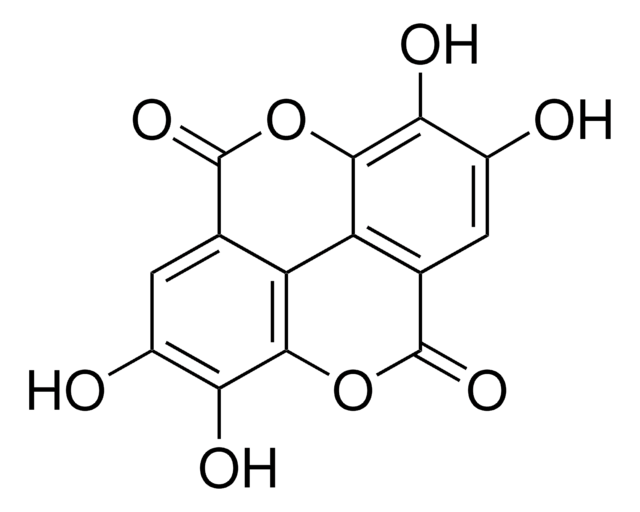Kluczowe dokumenty
G7384
Gallic acid
97.5-102.5% (titration)
Synonim(y):
3,4,5-Trihydroxybenzoic acid
About This Item
Polecane produkty
pochodzenie biologiczne
plant fruit
Poziom jakości
Próba
97.5-102.5% (titration)
Postać
powder
metody
HPLC: suitable
kolor
white to beige
mp
251 °C (dec.) (lit.)
rozpuszczalność
ethanol: 50 mg/mL, clear to slightly hazy, colorless to faintly yellow
przydatność
suitable for UV spectrophotometry and general use
suitable for absorption spectrum analysis
Zastosowanie
agriculture
metabolomics
microbiology
vitamins, nutraceuticals, and natural products
vitamins, nutraceuticals, and natural products
ciąg SMILES
OC(=O)c1cc(O)c(O)c(O)c1
InChI
1S/C7H6O5/c8-4-1-3(7(11)12)2-5(9)6(4)10/h1-2,8-10H,(H,11,12)
Klucz InChI
LNTHITQWFMADLM-UHFFFAOYSA-N
Szukasz podobnych produktów? Odwiedź Przewodnik dotyczący porównywania produktów
Powiązane kategorie
Opis ogólny
Zastosowanie
- as a standard for the quantification of extractable phenolics by external calibration
- as a standard to determine the total tannin content of oak root powder using the Folin-Ciocalteu method
- as a phenolic acid to study it′s in vitro antiviral, antibacterial, cytotoxicity and antifungal activities
Działania biochem./fizjol.
Cechy i korzyści
- High quality compound suitable for multiple research applications
- Compatible with HPLC and mass spectrometry techniques
Inne uwagi
Hasło ostrzegawcze
Warning
Zwroty wskazujące rodzaj zagrożenia
Zwroty wskazujące środki ostrożności
Klasyfikacja zagrożeń
Eye Irrit. 2 - Skin Irrit. 2 - STOT SE 3
Organy docelowe
Respiratory system
Kod klasy składowania
11 - Combustible Solids
Klasa zagrożenia wodnego (WGK)
WGK 1
Temperatura zapłonu (°F)
Not applicable
Temperatura zapłonu (°C)
Not applicable
Środki ochrony indywidualnej
dust mask type N95 (US), Eyeshields, Gloves
Certyfikaty analizy (CoA)
Poszukaj Certyfikaty analizy (CoA), wpisując numer partii/serii produktów. Numery serii i partii można znaleźć na etykiecie produktu po słowach „seria” lub „partia”.
Masz już ten produkt?
Dokumenty związane z niedawno zakupionymi produktami zostały zamieszczone w Bibliotece dokumentów.
Klienci oglądali również te produkty
Protokoły
HPLC Analysis of Polyphenols in Nero d'Avola Red Wine on Discovery® HS C18 (UV 280 nm)
Coumaric acid; Quercitrin; Myricetin; Quercetin
Nasz zespół naukowców ma doświadczenie we wszystkich obszarach badań, w tym w naukach przyrodniczych, materiałoznawstwie, syntezie chemicznej, chromatografii, analityce i wielu innych dziedzinach.
Skontaktuj się z zespołem ds. pomocy technicznej
